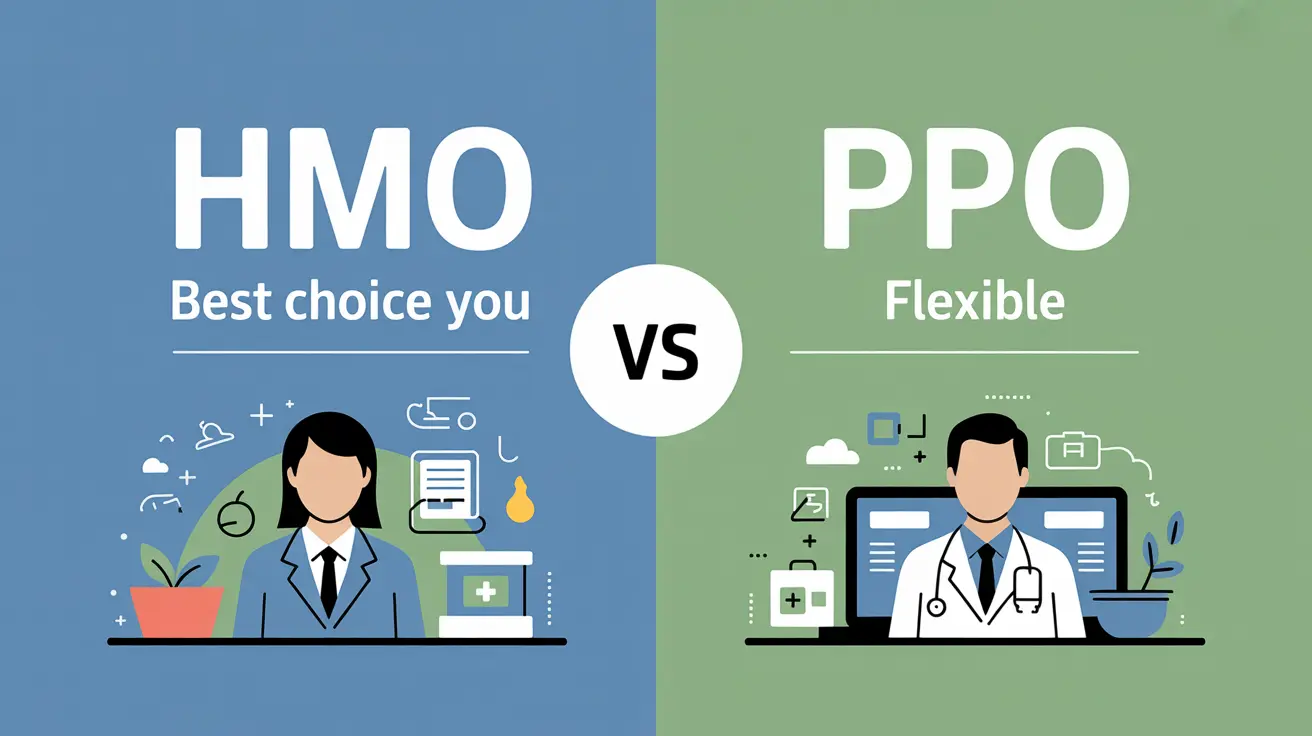Confused about HMO vs PPO plans? Discover cost differences, provider access, and key pros and cons to determine which health insurance type saves you the most money.
Understanding HMO and PPO Plan Fundamentals
When choosing health insurance, most people encounter two common options: Health Maintenance Organization (HMO) plans and Preferred Provider Organization (PPO) plans. Both cover medical needs, but the structure of their provider networks, referral requirements, and costs can make a big difference in your wallet.
Think of it this way:
- HMO = more rules, lower costs.
- PPO = more freedom, higher costs.
How HMO Networks Restrict Your Provider Choices
HMO plans require you to stick to in-network providers only. If you visit a doctor outside your network, you usually pay the full bill (except in emergencies).
📌 Example: If your HMO covers only CityCare Hospital and you want to see a specialist at Metro Health, you’ll likely be denied coverage.
This restriction helps insurers negotiate lower prices—but it limits your choices.
How PPO Plans Offer Greater Provider Flexibility
PPO plans give you freedom to see both in-network and out-of-network providers. In-network care is cheaper, but you’ll still get partial coverage even if you go out-of-network.
📌 Example: You can see a dermatologist at a clinic outside your PPO network and still have part of the visit reimbursed—though at a higher personal cost.
This flexibility is why PPOs are popular with people who travel often or want access to top specialists.
Key Structural Differences That Impact Your Costs
- HMO: Requires a Primary Care Physician (PCP) and referrals for specialists.
- PPO: No referrals needed; you can directly schedule with specialists.
- HMO: Lower premiums and out-of-pocket costs.
- PPO: Higher premiums, but wider provider choice.
Cost Comparison: Which Plan Type Saves You More Money
Monthly Premium Differences Between HMO and PPO Plans
On average:
- HMO Premiums: 15–20% lower than PPOs.
- PPO Premiums: Higher due to broader networks.
💬 “If keeping monthly costs low is your top priority, HMOs often win,” says Dr. Rachel Green, a healthcare policy expert.
Deductible Requirements and Out-of-Pocket Expenses
- HMOs: Typically lower deductibles, meaning your insurance starts covering costs sooner.
- PPOs: Higher deductibles, which can delay when your coverage kicks in.
Prescription Drug Cost Variations
Both plans cover prescriptions, but HMO formularies are usually more limited. A PPO might cover a wider range of brand-name drugs, though at a higher copay.
Network Coverage and Provider Access Benefits
HMO In-Network Only Coverage Limitations
- Must stay within network.
- Emergency exceptions apply.
- Limited hospitals/clinics, especially in rural areas.
PPO Out-of-Network Coverage Options
- Flexibility to visit out-of-network doctors.
- Higher coinsurance for out-of-network visits.
- Better for frequent travelers.
Network Size Differences and Provider Selection
PPO networks are usually larger, giving you more options. HMOs often have smaller, region-focused networks.
Primary Care and Specialist Access Requirements
HMO Primary Care Physician and Referral System
Your PCP acts as a gatekeeper. They coordinate your care and must give referrals for specialists.
Pros: Better coordination.
Cons: Extra steps = time delays.
PPO Direct Specialist Access Without Referrals
You can book directly with a cardiologist, dermatologist, or orthopedist—no referrals needed.
This saves time but can lead to fragmented care if doctors aren’t coordinating.
Choosing the Right Plan Based on Your Financial Priorities
When HMO Plans Maximize Your Savings
- You’re healthy and mostly need preventive care.
- You don’t mind sticking to a local provider network.
- You want lower monthly costs.
When PPO Flexibility Justifies Higher Costs
- You travel frequently.
- You want freedom to see specialists directly.
- You’re managing a chronic condition and need multiple providers.
Key Questions to Determine Your Best Value Option
- How often do you travel or live in multiple states?
- Do you prioritize cost savings or provider freedom?
- Are your preferred doctors in-network?
- Do you need frequent specialist care?
Quick Comparison Table: HMO vs PPO
| Feature | HMO | PPO |
|---|---|---|
| Premiums | Lower | Higher |
| Deductibles | Lower | Higher |
| Network Restrictions | In-network only | In & out-of-network |
| Specialist Access | Referral required | No referral needed |
| Best For | Cost-conscious members | Flexibility seekers |
FAQs About HMO vs PPO
Which is cheaper: HMO or PPO?
HMO plans usually cost less in terms of premiums and deductibles, making them more budget-friendly.
Can I switch from HMO to PPO later?
Yes, usually during open enrollment or after a qualifying life event (like moving states).
Do PPOs always save more in the long run?
Not necessarily. If you rarely see specialists, an HMO can save you hundreds per year.
Which is better for families?
Families with multiple healthcare needs often prefer PPOs for flexibility, though HMOs may save more if everyone’s doctors are in-network.
Final Thoughts
The choice between an HMO and a PPO isn’t just about saving money—it’s about balancing cost vs. convenience.
- Choose an HMO if you want predictable, lower costs and don’t mind limited provider options.
- Choose a PPO if flexibility and direct specialist access are worth the higher price tag.
💬 “The cheapest plan isn’t always the best—your lifestyle, travel habits, and health needs should guide your choice,” notes insurance advisor Mark Ellis.
👉 Pro Tip: Always check whether your current doctors and hospitals are in-network before enrolling.


1 thought on “HMO vs PPO: Which Health Insurance Type Saves More Money?”